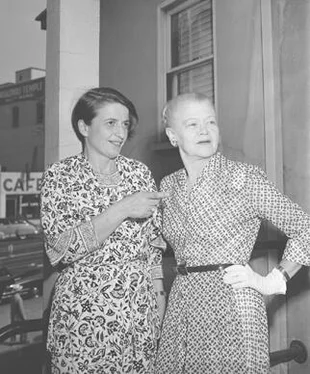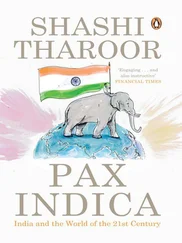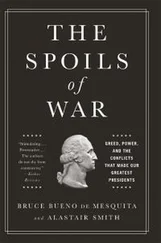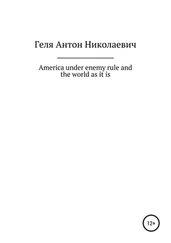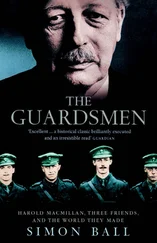Anne Heller - Ayn Rand and the World She Made
Здесь есть возможность читать онлайн «Anne Heller - Ayn Rand and the World She Made» весь текст электронной книги совершенно бесплатно (целиком полную версию без сокращений). В некоторых случаях можно слушать аудио, скачать через торрент в формате fb2 и присутствует краткое содержание. Жанр: Биографии и Мемуары, на английском языке. Описание произведения, (предисловие) а так же отзывы посетителей доступны на портале библиотеки ЛибКат.
- Название:Ayn Rand and the World She Made
- Автор:
- Жанр:
- Год:неизвестен
- ISBN:нет данных
- Рейтинг книги:5 / 5. Голосов: 1
-
Избранное:Добавить в избранное
- Отзывы:
-
Ваша оценка:
- 100
- 1
- 2
- 3
- 4
- 5
Ayn Rand and the World She Made: краткое содержание, описание и аннотация
Предлагаем к чтению аннотацию, описание, краткое содержание или предисловие (зависит от того, что написал сам автор книги «Ayn Rand and the World She Made»). Если вы не нашли необходимую информацию о книге — напишите в комментариях, мы постараемся отыскать её.
Ayn Rand and the World She Made — читать онлайн бесплатно полную книгу (весь текст) целиком
Ниже представлен текст книги, разбитый по страницам. Система сохранения места последней прочитанной страницы, позволяет с удобством читать онлайн бесплатно книгу «Ayn Rand and the World She Made», без необходимости каждый раз заново искать на чём Вы остановились. Поставьте закладку, и сможете в любой момент перейти на страницу, на которой закончили чтение.
Интервал:
Закладка:
This was “the first most important event in my life socially, which made me see that it’s not significant why some people, who seem to be individualistic, get along with the crowd, and I don’t,” she later said. “I had thought she was a serious girl and that she was after serious things, but she was just conventional and ordinary, a mediocrity, and she didn’t mean anything as a person. It was really like a fallen idol.”
Rand wasn’t antisocial; she would have liked to have a friend. But her quick dismissals of people based on what she saw as fatal flaws in character or thinking would form a pattern in her life. In the face of disappointment, she was unable or unwilling to ask herself why a girl she had admired, for example, would give a silly or sentimental answer to a serious question. Could the girl have misunderstood what Rand was after? Could she simply have been startled? Could she have had an interesting reason for what she said? Rand did not ponder the context of the girl’s response, nor did she dig deeper to see what she could learn. People were either exceptional or ordinary, her kind of people or nonentities. Later, she would call herself a hero-worshiper, and it’s no accident that she spoke of this girl as “a fallen idol.” Her romantic tendencies caused her to overestimate some people and underestimate others. She rarely reconsidered. Her readings of people who disappointed her would only harden and darken over time.
Her ambitions were set. By her tenth birthday, she was writing novels at home and in school. At Stoiunin, she sat in the back of the class, a book propped in front of her to disguise what she was doing, and wrote. She finished four novels by the age of eleven, each of which featured a heroine who was exactly her own age. The surface similarities stopped there. Foreshadowing Dagny Taggart and Dominique Francon, these first heroines were tall and long-legged, with bobbed hair and blue eyes. One was named Thunder (“Rpom”). Another, from the same year—1915, the gruesome second year of World War I, when Russian military losses had already exceeded a million men and England was in danger of being invaded by Germany—was an English girl who argued her way into the British Royal Navy and single-handedly machine-gunned down the entire German fleet. Such lone heroism and unflinching use of violence are more familiar in boys’ stories than in girls’, but this was to be Rand’s pattern: to assume the preferences and prerogatives of the men of her time.
Cyrus’s influence can be seen in this story, of course, but so, perhaps, can that of Joan of Arc, whom Rand considered the most heroic woman in history. Why? Because she “stood alone against everyone, even to the point of death,” explained a longtime friend of Rand’s. Whenever necessary, so would Ayn Rand.
The child was aware that these early stories were “just for her;” she didn’t expect to publish anything until she was grown up, she said. But she did expect to publish. So by the age of ten she was pursuing what she already thought of as her future career. As her mother wrote to her many years later, “You [always] planned to be greater than Columbus.”
If Anna hoped that young Rand would make friends among the hand-picked students at Stoiunin, she was for the most part disillusioned. Rand stood on the outside of her peer group, proudly, bitterly, self-consciously alone. She hated the stocky shape of her developing body, which she felt didn’t accord with her essence, but she was proud of her mind. She told herself that she took life and ideas more seriously than the other girls and that her values, especially her all-consuming passion for Cyrus, were superior to theirs. She was “left strictly alone,” she said. In spite of her proud defiance, she was again desperately lonely. She longed to find her kind of people, and, for now, to do so meant she had to make them up in stories. And so emerged the three-dimensional world of Ayn Rand, where idealized characters take the measure of reality and often find it needs correcting.
*After coming to the United States, Rand referred to herself as Alice, the English equivalent of her name Alissa.
TWO
LOOTERS
1917–1925
There is a fundamental conviction which some people never acquire, some hold only in their youth, and a few hold to the end of their days—the conviction that ideas matter. … And the radiance of that certainty, in the process of growing up, is the best aspect of youth.
“Inexplicable Personal Alchemy,” 1969
Howard Roark, the flame-haired architect-hero of The Fountainhead , has often been compared to the famously willful American architect Frank Lloyd Wright. Both were professional rebels; both were “faithful to the truth, though all the world should stand against” them, to quote Wright. But Roark’s original prototype may well be Peter the Great, the early-eighteenth-century Russian czar who, harnessing his own unbending will and limitless power, built the improbable city of Ayn Rand’s birth.
Some of the best-known lines in Russian poetry, memorized by Russian schoolchildren for the last 150 years, were written by Aleksandr Pushkin and describe Peter at the moment of his decision to raise St. Petersburg on a collection of frigid, barren islands on the Baltic seacoast near Finland: “On the shore of empty waves he stood, filled with great thoughts, and stared out.” Perhaps it’s no coincidence that the opening lines of The Fountainhead read, “Howard Roark laughed. He stood naked on the edge of a cliff. A frozen explosion of granite burst in flight to the sky over motionless water.”
In Rand’s first novel, We the Living , she describes St. Petersburg as a “city of stone,” which it is. Like her rock-jawed hero Roark’s sculpted glass and granite buildings, the city Rand grew up in was “not acquainted with nature,” she wrote in the early 1930s. “It is the work of man” and, moreover, “the work of man who knows what he wants.” The adult Rand admired, even lionized, men who knew what they wanted, though few she ever met would understand their objectives as well as she understood hers. And all her life she loved cities that were “not acquainted with nature,” especially New York, her home for her final thirty years.
The willful Peter paved the way for Catherine, his granddaughter by marriage, to embrace and celebrate everything European. What Peter wanted was “a window to the West”: a new capital city that would turn its back on the Mongol and Slavic traditions of central Russia and look toward Europe and its technical achievements. In building St. Petersburg as close as possible to Europe, his aim was “to astonish Russia and the civilized world” and to rival Paris, Amsterdam, and Venice. This he did: In the course of just twenty-five years, beginning in 1703, he created an astonishing eighteenth-century port city entirely of imported granite, marble, slate, and travertine. For Peter, as one historian has observed, “St. Petersburg was … a vast, almost utopian, project of cultural engineering to reconstruct the Russian as a European man.” To this end, he commissioned peasant workers from all over the empire; tens of thousands of them died of starvation, disease, and exposure to the cold. Even today, residents of St. Petersburg speak of their city as having risen on the bones of the dead. As Ayn Rand would demonstrate, though less violently, the utopian strain in the Russian imagination was harsh and rarely found expression without inflicting damage.
Peter’s project failed to Westernize Russia. Although generations of inhabitants of St. Petersburg, including Rand, learned to value Western attitudes and culture, Ukrainians, Turkmen, Mongols, and Russian yeomen and peasants remained uneducated and stubbornly provincial. An intractable tendency lay embedded deep in Russia’s heart: to hold fast to its semi-Asiatic, feudal, Byzantine Christian, anti-Western past. For the most part, Peter’s city remained an island of Western values in a sea of illiteracy, abject poverty, and daunting superstition. This was the Russia that Ayn Rand hated and that the Bolshevik Revolution would appeal to with promises of potatoes, collective power, and revenge.
Читать дальшеИнтервал:
Закладка:
Похожие книги на «Ayn Rand and the World She Made»
Представляем Вашему вниманию похожие книги на «Ayn Rand and the World She Made» списком для выбора. Мы отобрали схожую по названию и смыслу литературу в надежде предоставить читателям больше вариантов отыскать новые, интересные, ещё непрочитанные произведения.
Обсуждение, отзывы о книге «Ayn Rand and the World She Made» и просто собственные мнения читателей. Оставьте ваши комментарии, напишите, что Вы думаете о произведении, его смысле или главных героях. Укажите что конкретно понравилось, а что нет, и почему Вы так считаете.
